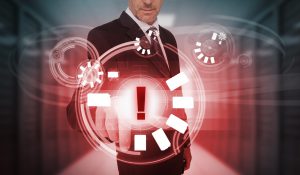 Have you ever had a piece of furniture such as a sofa or a piece of technology such as a smart phone that used to work perfectly fine, but suddenly in an unpredictable incident one part gets damaged and breaks and the whole product becomes useless?
Have you ever had a piece of furniture such as a sofa or a piece of technology such as a smart phone that used to work perfectly fine, but suddenly in an unpredictable incident one part gets damaged and breaks and the whole product becomes useless?
In many cases you discard the product because it is not functioning, and it is not possible to fix it. Perhaps it is just not aesthetically good enough. Or maybe it is so damn costly that you prefer to buy a new one. Have you ever owned a product for some time that you are happy with, but you wish a better performance and functionality? Or the other way around, have you owned a product that functions just fine, exactly the way you want, but after some time you wish a more modern aesthetic look? In majority of the cases, you have to buy a new one to match your desire. Have you ever been in a situation where you wish you could easily repair the faulty parts of your product by yourself in a few minutes? But you need to use your weekend/free time to take it to a repair shop because you don’t know how to fix it and what tools to use.
Product development can solve much
Neither of these issues necessarily need complicated solutions with technological advances. All these questions and issues could be asked during the product design phase. The key is to ask the right question at a right time and also put some thoughts on what would happen to the product after 5 years? How about 10 years? What if it couldn’t pass 2 years mark and accidently fails? What if things are changed in close future, like legislations on type of material used. What if the product is intensively used? A great proportion of environmental effects could be reduced if asking the right questions and considering environmental and circularity aspects when designing and developing products and also when making decisions about business models.
CIRCit – a project to find out how to do
In the CIRCit project, we are working with such questions and issues. And it is not only researchers but also practitioners from industries in the Nordic region that try to address circularity issues. Together with them we develop tools, methods and guidelines to address circular economy in early design phase of products. This is a very attractive area for companies who want to increase their competitiveness and innovative capabilities.
Enablers of circularity in product design
Product design is also important for other trendy and fast-developing areas such as Internet of Things (IoT) and digitalization as well as innovative business model development. For instance, how informative would it be if we could understand when and why our product fails to function, so we could improve the design. Even more interesting if we could change the faulty part before it breaks down through monitoring the product conditions. Circular product design also requires modularity and ease of repairability such as quick access to the faulty component, availability of exchanging components, simple tools utility and reduced repairing time, among other things. In addition, it is really important that the product matches the business model. For instance, product designed and developed for lease and renting might not share the same specification of a product designed to be sold in mass numbers. Product for lease and rent must be more robust and durable, since they would be used more often and intensively.
In short, I’m very excited about the project and circular economy opportunities that we see at the companies, particularly within small and medium-sized companies (SMEs). Would be interesting to see how would it turn out to be in 10-20 years later.
Author: Sasha Shahbazi, PhD, RISE IVF
